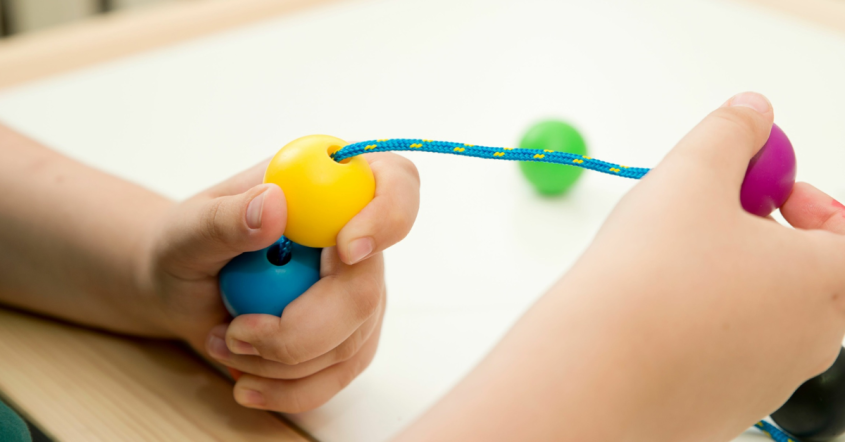Eye-hand coordination is the ability to use our eyes and hands together in a smooth and efficient way. It allows us to guide our hands using visual information. For kids, developing this skill is very important because it helps them perform everyday tasks, do better in school, and enjoy physical activities more.
This coordination starts developing when a baby is just a few months old. As they begin to reach for toys, hold a spoon, or play with blocks, they are learning how to make their hands follow what their eyes see. In this article, we’ll explore why eye-hand coordination is important and share some fun and simple drills to help kids strengthen this skill.
Section 1: Why Eye-Hand Coordination Matters
Eye-hand coordination is essential in many areas of a child’s life. Here are some of the main reasons it matters:
1. Academic Skills
Kids need good eye-hand coordination for activities such as writing, drawing, and using scissors. When they write, their eyes guide their hand to form letters properly. Poor coordination can lead to messy handwriting, slower writing speed, and frustration.
2. Physical Activities
Many sports and games, like catching a ball or hitting a shuttlecock, require eye-hand coordination. If a child struggles with this, they may avoid sports, miss out on social interaction, and have lower physical fitness levels.
3. Everyday Tasks
Simple daily activities such as eating with a spoon, brushing teeth, buttoning clothes, and tying shoelaces also require this coordination. These tasks help children become more independent.
In short, eye-hand coordination is a foundation for both learning and life skills. Helping kids improve this ability can boost their confidence and make daily routines smoother.
Section 2: Fun and Effective Drills for Toddlers and Preschoolers
Here are some simple and fun activities you can try at home to help younger kids (ages 2–5) develop eye-hand coordination:
1. Rolling a Ball
Sit on the floor facing your child and roll a soft ball back and forth. This activity helps children learn to track the moving ball with their eyes and move their hands to catch it.
Tips:
- Use a lightweight, colorful ball.
- Praise them for trying, even if they miss.
- Increase distance slowly as they improve.
2. Object Relays
Create a simple obstacle course with pillows or toys and have your child carry objects (like a small ball or beanbag) from one place to another. This improves balance, coordination, and attention.
Tips:
- Make it a race with a sibling or friend.
- Use different sizes and weights of objects.
3. Gentle Tossing
Use beanbags or soft balls and gently toss them for your child to catch. Start with short distances and underhand throws.
Tips:
- Encourage using both hands first.
- Gradually move to catching with one hand.
4. Bubble Popping
Blow bubbles and have your child pop them with their fingers. This helps with tracking moving objects and reacting quickly.
Tips:
- Use a bubble machine for lots of bubbles.
- Try popping with different fingers.
5. Bead Threading
Provide your child with large beads and a shoelace to practice threading. This builds fine motor control and focus.
Tips:
- Use colorful beads to keep their attention.
- Count beads aloud to add a learning element.
These activities can be done indoors or outdoors, making them easy to include in your child’s playtime.
Section 3: Advanced Activities for Older Kids
Older children (ages 6 and up) can handle more challenging activities to further develop their coordination skills:
1. Ball-Wall Toss
Have your child throw a tennis ball against a wall and catch it on the rebound. This improves timing, accuracy, and reaction speed.
Tips:
- Start with both hands, then progress to one hand.
- Try using two balls for an added challenge.
2. Toss and Catch
Toss a ball into the air and catch it. Try different heights, spins, or using a smaller ball to increase difficulty.
Tips:
- Use a soft ball indoors.
- Create challenges like “catch with one hand” or “clap before catching.”
3. Sport Stacking
Cup stacking games involve arranging and unstacking cups in specific patterns quickly. This sharpens focus and coordination.
Tips:
- Use plastic cups or buy a speed stacking set.
- Race against a timer or a friend.
4. Ring Toss
Set up a ring toss game using cones and plastic rings. Children must aim and throw rings accurately.
Tips:
- Vary the distance.
- Give points for each successful toss.
5. Clapping Games
Play rhythm games that involve clapping in sequences. These help kids match visual cues with physical movements.
Tips:
- Use songs or rhymes to make it fun.
- Add foot stomps or snaps to increase difficulty.
These advanced drills can be part of physical education, playtime, or even family game night. They keep older kids engaged while sharpening their coordination.
Section 4: Incorporating Drills into Daily Routine
Eye-hand coordination activities don’t need to be extra work. They can be easily added into daily life:
1. Consistency Matters
Just like learning to read or ride a bike, regular practice is key. Spending even 10–15 minutes a day on coordination drills can show big results over time.
Ideas:
- Make it part of morning or evening routines.
- Schedule it like a mini play workout.
2. Turn Everyday Tasks into Drills
Many daily chores are great chances to practice coordination. Pouring water, setting the table, or zipping up a jacket can become learning opportunities.
Ideas:
- Let them help in the kitchen.
- Use fun utensils or colorful tools.
3. Get Involved as a Family
Kids are more motivated when parents or siblings join in. Playing together not only boosts skills but also strengthens family bonds.
Ideas:
- Family tossing or stacking competitions.
- Dance-along clapping games.
By incorporating these drills into their daily routine, children can develop their coordination skills in a natural and stress-free manner.
Conclusion
Eye-hand coordination is a key skill that supports children in school, sports, and everyday life. With simple and fun drills, you can help your child build these skills from an early age. Whether it’s popping bubbles, tossing a ball, or threading beads, each activity plays a part in strengthening their development.
Start small, stay consistent, and enjoy the process. As your child practices and improves, you’ll not only see better coordination but also more confidence, independence, and joy in their daily routines.
















